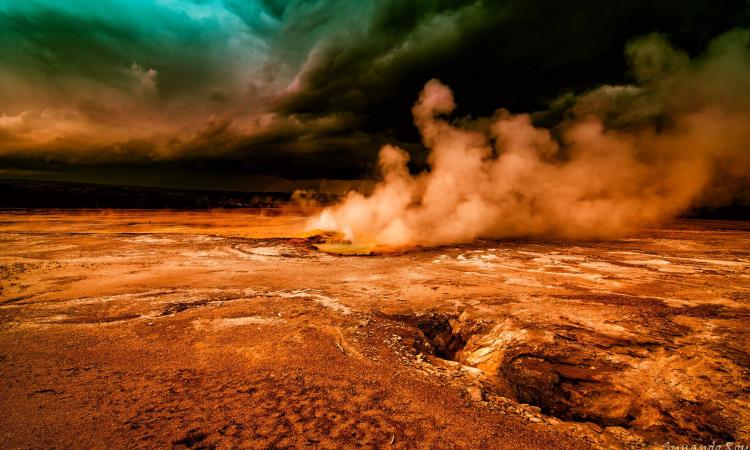
India has many reasons to be concerned about climate change. Its large population depends upon climate-sensitive sectors such as agriculture and forestry for its livelihood. By the mid-century, annual average river runoff and water availability are projected to increase by 10-40% at high latitudes and in some wet tropical areas and decrease by 10-30% over some dry regions at mid-latitudes and in the dry tropics, some of which are presently water-stressed areas.
Observational evidence from all continents and most oceans shows that many natural systems are being affected by regional climate changes, particularly temperature increases (very high confidence). Large-scale area-average precipitation changes are more difficult to quantify than temperature changes because of the higher spatial variability of precipitation and because of data homogeneity problems, which are more difficult to overcome.
A global assessment of data since 1970 has shown it is likely that anthropogenic warming has had a discernible influence on many physical and biological systems.
Evaluation of evidence on observed changes related to climate change is made difficult because the observed responses of systems and sectors are influenced by many other factors.
The impact of climate change on water resources in India is estimated to be positive in some areas and negative in others. Changes in seasonality and amount of water flows from river systems are likely to occur due to climate change.
Non-climatic drivers can influence systems and sectors directly and/or indirectly through their effects on climate variables such as reflected solar radiation and evaporation.
In the Indian context, key factors that need to be borne in mind are:
- The impact of climatic change is likely to be most adversely felt in regions which presently use a high proportion of available water,
- Water supply systems, which are resilient under the current climate during adverse weather conditions, will be more able to meet changed climate conditions,
- Water resources whose physical properties are well understood and whose exploitation is based on this understanding will be capable of being reorganized most rapidly to accommodate new conditions, and
- One should avoid making unattainable demands on climate and hydrological modelers.
Globally, water demand will grow in the coming decades, primarily due to population growth and increased affluence. Regionally, large changes in irrigation water demand as a result of climate change are likely.
Current water management practices are very likely to be inadequate to reduce the negative impacts of climate change on water-supply reliability, flood risk, health, energy and aquatic ecosystems.
Improved incorporation of current climate variability into water-related management is likely to make adaptation to climate change easier. Climate change impact, adaptation and vulnerability assessment has now moved far beyond its early status as a speculative, academic endeavor.
Study of impacts of climate change on various components of the hydrological cycle have been classified broadly into two categories: (i) studies using Global Circulation Models (GCM)/Regional Circulation Models (RCM) directly to predict impact of climate change scenarios (ii) studies using hydrological models with assumed plausible hypothetical climatic inputs. High-resolution climate change scenarios have been generated for different states of India.
Some of the major findings concerning water resources are:
- The rainfall scenarios are dependent on climate scenarios.
- There are substantial spatial differences in the projected rainfall changes. The maximum expected increase in rainfall (10 to 30%) is for central India.
- There is no clear evidence of any substantial change in the year-to year variability of rainfall over the next century.
- Surface air temperature shows comparable increasing trends by as much as 3 to 4°C towards the end of the 21st century. The warming is widespread over the country, and relatively more pronounced over northern parts of India.
Studies have been carried out to analyze the trends of variation in temperature over Indian sub-continent and the results have been compared with global trend. An analysis of temperature data of 125 stations distributed all over India shows an increase of 0.42°C, 0.92°C and 0.09°C in annual mean temperature, mean maximum temperature and mean minimum temperature respectively over the last 100 years.
However, the trends are varying on regional basis. It has been observed that the changes in temperature in India/Indian-subcontinent over last century are broadly consistent with global trend of increase in temperature. At a basin scale, reduction in melt from the lower part was counteracted by the increased melt from upper part of the basin, resulting in a decrease in the magnitude of change in annual melt runoff. The impact of climate change was found to be more prominent on seasonal rather than annual water availability.
Dhananjay Singh is a Young Professional working with the National Water Mission, Department of Water Resources, River Development & Ganga Rejuvenation, Ministry of Jal Shakti, New Delhi.
Disclaimer: The views and opinions expressed in this article are those of the author/s and do not necessarily reflect the policy or position of India Water Portal.
/articles/impact-climate-change-river-basins-india